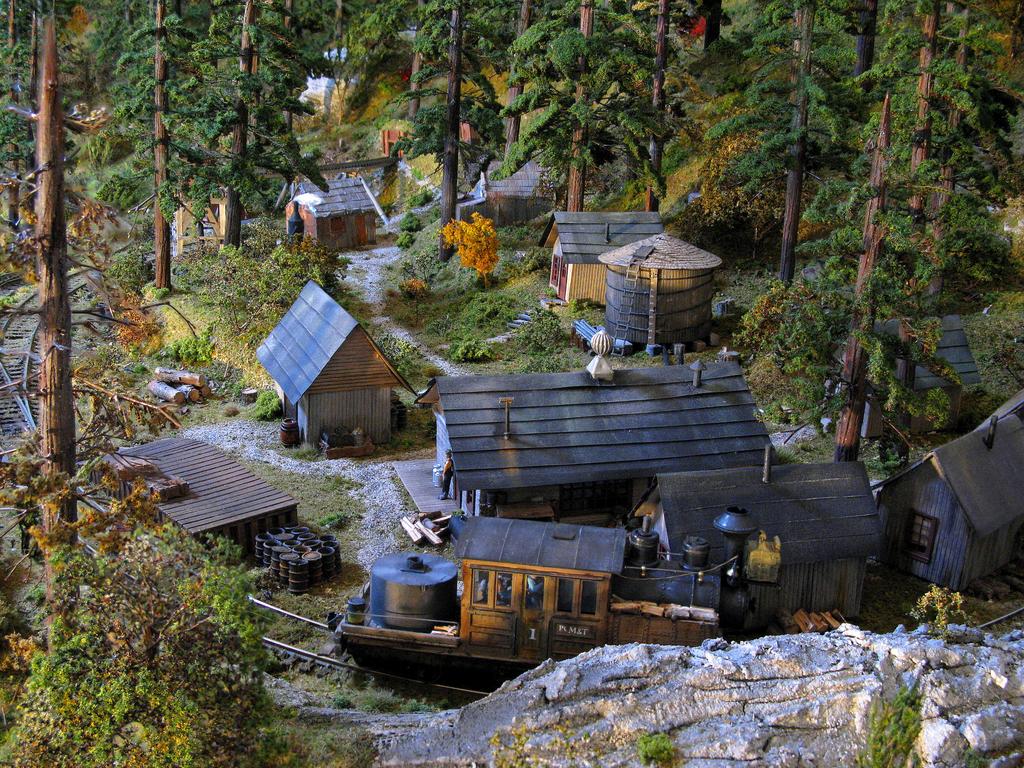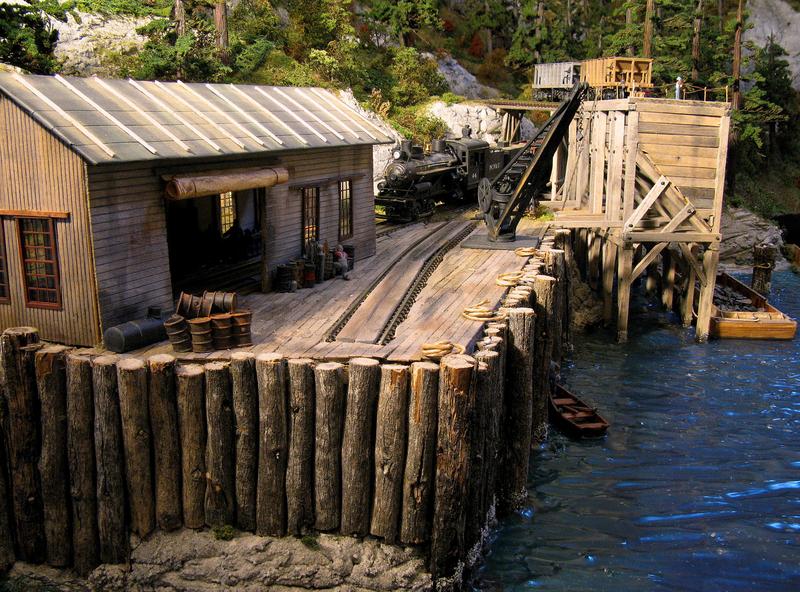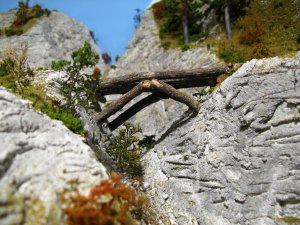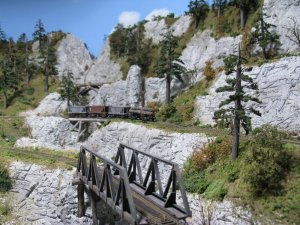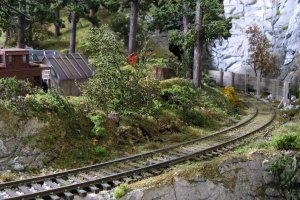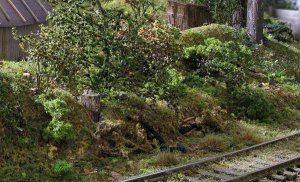HOexplorer
Well-Known Member
Next up: About Laser kit building.
Below is a photo of the only laser kit building I have on this layout. I will say that laser kits are one of the most innovative and timesaving things to appear in my fairly short modeling career.
I am a big fan of these kits. They give fairly easy stuctures to assemble that would be beyond the scratch building capabilities of most of us. They are handy and best of all priced about right for what you get. If you've never tried one get a small kit and follow the directions. Simple. After you've finished you can weather or paint them anyway you want.
If you are going to stain the wood before hand you should let the wood dry under something to keep the wood from warping. One way to keep wood from warping is just stain one side. Heck with the insides, no one can see in there anyway! I recommend painting for insides if you must. Paint is thicker and less prone to soak the wood. Don't over due the paint or the stain. The reason for staining or painting before assembly is to have a more even color on your building if some glue leaks out. Paint or stain won't penetrate your wood glues.
Here is a trick for those who do stain after assembly. If you have an inadvertent glue drip, you can try to snip it off with your rail nippers or your #11 blade. If this doesn't work stain on the inside of the building and soak it enough to let the stain work its way under the glue glob.
In this kit you may notice the window is not quite up to plastic insert standards. You can leave out the frame and substitute a plastic window frame or paint the wooden frame. I left this window untreated so you can see what it looks like originally.
Lastly, some folks who are careful with their gluing will swear that they can make a credible laser or even scratch built model. I agree. I put glue on with a tooth pick and sometimes stain last. If I'm modeling a broken down old building I like to do the stain last. The wooden walls get a slight warped look which is appealing. If this may be your first attempt at scratch or laser buildings staining first is the best way to go. Notice the wood shed. Simple scratch building next time. Jim
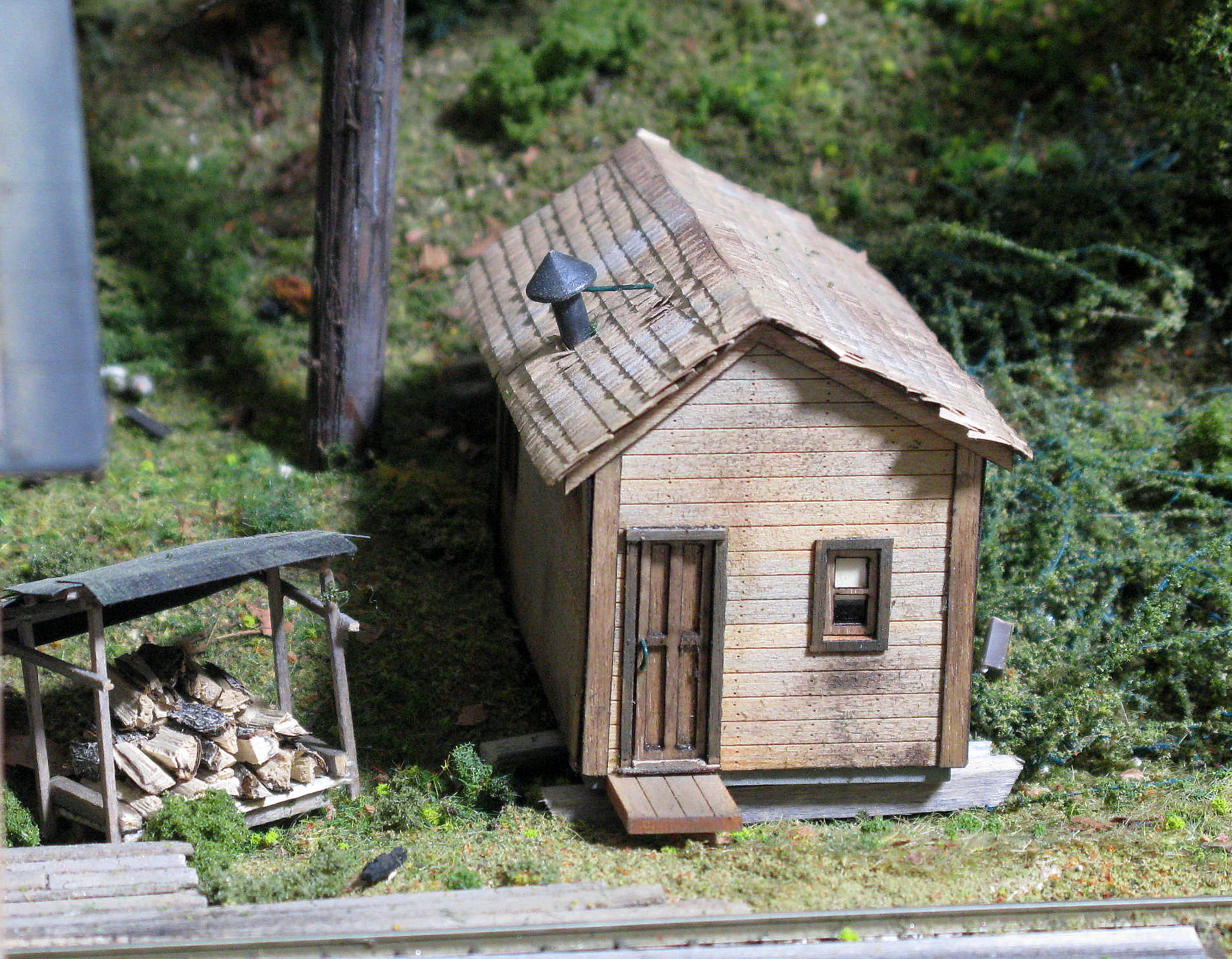
Below is a photo of the only laser kit building I have on this layout. I will say that laser kits are one of the most innovative and timesaving things to appear in my fairly short modeling career.
I am a big fan of these kits. They give fairly easy stuctures to assemble that would be beyond the scratch building capabilities of most of us. They are handy and best of all priced about right for what you get. If you've never tried one get a small kit and follow the directions. Simple. After you've finished you can weather or paint them anyway you want.
If you are going to stain the wood before hand you should let the wood dry under something to keep the wood from warping. One way to keep wood from warping is just stain one side. Heck with the insides, no one can see in there anyway! I recommend painting for insides if you must. Paint is thicker and less prone to soak the wood. Don't over due the paint or the stain. The reason for staining or painting before assembly is to have a more even color on your building if some glue leaks out. Paint or stain won't penetrate your wood glues.
Here is a trick for those who do stain after assembly. If you have an inadvertent glue drip, you can try to snip it off with your rail nippers or your #11 blade. If this doesn't work stain on the inside of the building and soak it enough to let the stain work its way under the glue glob.
In this kit you may notice the window is not quite up to plastic insert standards. You can leave out the frame and substitute a plastic window frame or paint the wooden frame. I left this window untreated so you can see what it looks like originally.
Lastly, some folks who are careful with their gluing will swear that they can make a credible laser or even scratch built model. I agree. I put glue on with a tooth pick and sometimes stain last. If I'm modeling a broken down old building I like to do the stain last. The wooden walls get a slight warped look which is appealing. If this may be your first attempt at scratch or laser buildings staining first is the best way to go. Notice the wood shed. Simple scratch building next time. Jim

Last edited by a moderator:

